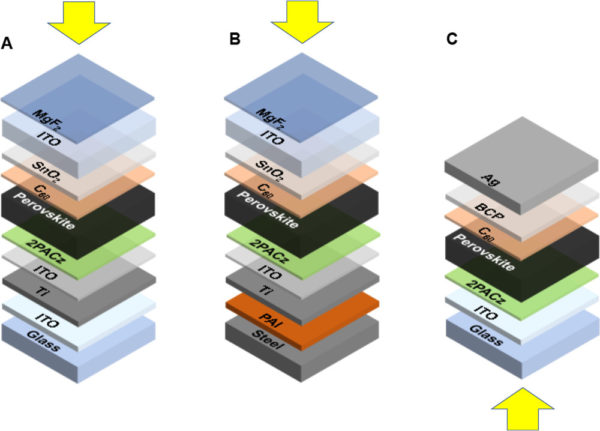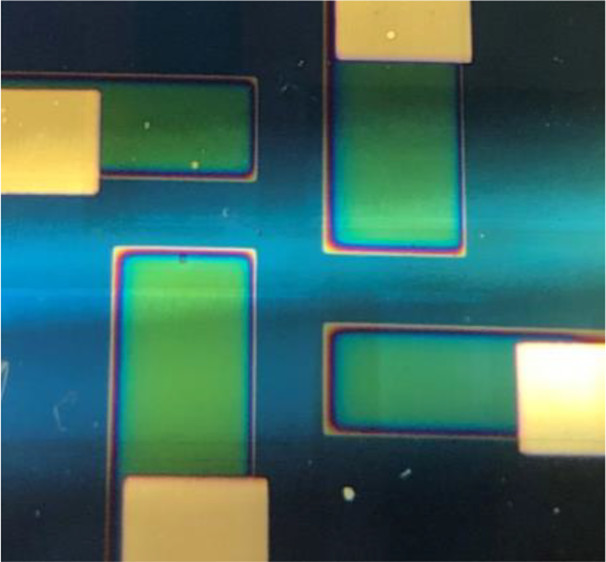A group of scientists in the Netherlands has fabricated an inverted perovskite solar cell based on a polymer-coated steel substrate that can achieve a power conversion efficiency approaching that of non-inverted reference solar cells with a similar stack design.
The cell has a p-i-n structure and relies on nickel-plated steel coated with a polyamide-imide (PAI) planarization layer, which serves as an insulating layer. The researchers used an opaque titanium electrode covered with a thin sputtered indium tin oxide (ITO) layer to enable the binding of the phosphonic acid anchoring groups of the monolayer based on a perovskite known as 2PACz, which serves as a hole-collecting electrode.

Image: Eindhoven University of Technology, ACS Publications, Creative Commons License CC BY 4.0
They also used buckminsterfullerene, a molecule which is also known as C60, for the fabrication of the ETL. They also added a tin(IV) oxide (SnO2) buffer layer, via atomic layer deposition (ALD), to prevent damage to the underlying stack during sputter deposition of the transparent ITO top electrode.
The performance of the solar cell was compared under standard illumination conditions to that of two reference devices built on a glass substrate and a glass superstructure, respectively. The latter showed a power conversion efficiency of 19.1%, an open-circuit voltage of 1.13 V, a short-circuit current of 20.8 mA cm–2, and a fill factor of 0.81.
Popular content
The cell on the steel substrate reached an efficiency of 16.5%, an open-circuit voltage of 1.11 V, a short-circuit current of 19.9 mA cm–2, and a fill factor of 0.75. The device based on the glass substrate exhibited an efficiency of 15.8%, an open-circuit voltage of 1.11 V, a short-circuit current of 19.8 mA cm–2, and a fill factor of 0.72.
“This demonstrates that substrate-configuration cells fabricated on the Ni-plated steel substrate can reach similar performance levels as those made on glass,” the scientists said. “Strategies to further increase the PCE of substrate-configuration cells can therefore focus on reducing the optical losses in the ETL, enhancing the reflection of the bottom electrode, and using a less resistive transparent top contact.”
They presented their findings in “p–i–n Perovskite Solar Cells on Steel Substrates,” which was recently published in ACS Publications. The group includes researchers from the Eindhoven University of Technology, the Netherlands Organisation for Applied Scientific Research (TNO), and Indian steel manufacturer Tata Steel.
This content is protected by copyright and may not be reused. If you want to cooperate with us and would like to reuse some of our content, please contact: editors@pv-magazine.com.



3 comments
By submitting this form you agree to pv magazine using your data for the purposes of publishing your comment.
Your personal data will only be disclosed or otherwise transmitted to third parties for the purposes of spam filtering or if this is necessary for technical maintenance of the website. Any other transfer to third parties will not take place unless this is justified on the basis of applicable data protection regulations or if pv magazine is legally obliged to do so.
You may revoke this consent at any time with effect for the future, in which case your personal data will be deleted immediately. Otherwise, your data will be deleted if pv magazine has processed your request or the purpose of data storage is fulfilled.
Further information on data privacy can be found in our Data Protection Policy.